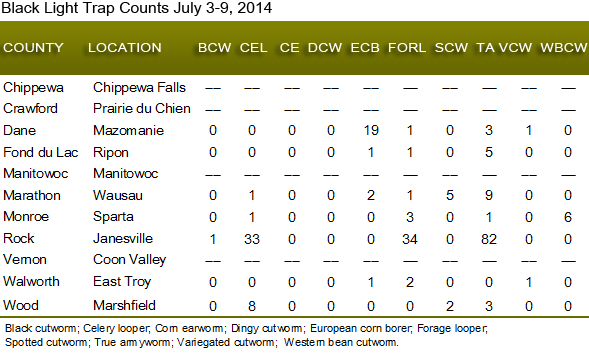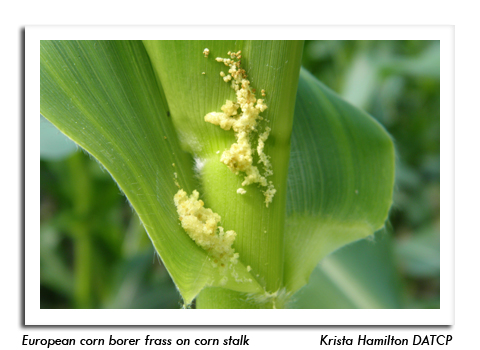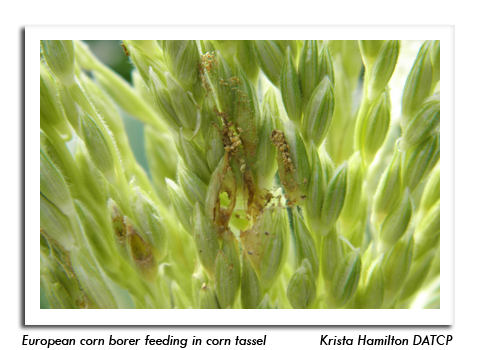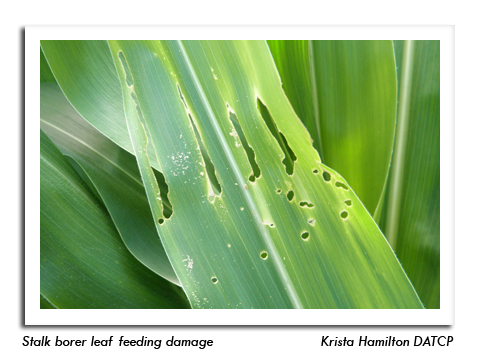
 |
|
|
Corn
Volume 59 Number 10 Date 07/10/2014 EUROPEAN CORN BORER - Larval infestations were unexpectedly common in the south-central, southwest and west-central areas, with 33 of 86 fields (38%) examined showing 1-14% of plants with whorl feeding injury. Second and third-instar larvae were the predominant development stages in Dane, La Crosse, Richland and Vernon counties. Chemical control has become less effective now that the caterpillars are boring into corn midribs and stalks. Close inspection of susceptible cornfields and Bt refuge areas is advised to determine the percentage of whorls infested with small larvae and whether control is justified. Growers of Bt corn should also scout fields this month to evaluate the performance of their hybrids. WESTERN BEAN CUTWORM - The first moths of 2014 were registered from June 26-July 3 in traps in Columbia, Dane and Fond du Lac counties. Another 25 moths were collected in Adams, Columbia, Fond du Lac, Green Lake, Marquette, Monroe, Sauk and Walworth counties this week. These low counts signal the start of the adult flight period in Wisconsin. Participants in the DATCP western bean cutworm trapping network are reminded to begin reporting weekly moth totals to Tracy Schilder at tracy.schilder@wisconsin.gov or by phone at (608) 224-4544 by July 16. CORN EARWORM - Larvae resulting from an early and minor migration last month are appearing in corn in Richland and Sauk counties. Sweet corn should be checked regularly for this pest, and treatments applied if 50% or more of the whorls are infested. STALK BORER - Damage to corn has become pronounced as larvae approach maturity. Surveys of V7-VT corn fields found infestation rates of 2-43%, with the highest population noted near DeForest in Dane County. Spot treatment is no longer effective for many south-central fields since the larvae have bored into the stalks and unemerged tassels. Treatments must be applied from 1,400-1,700 degree days (base 41°F), or prior to the V7 stage. Stalk borer feeding is unlikely to kill corn plants beyond V7. TRUE ARMYWORM - Another significant flight of 82 moths reported from Janesville this week suggests that corn and wheat growers should remain alert for larval infestations, especially in corn with grassy weed pressure and wheat fields lodged during recent severe thunderstorms. -- Krista Hamilton, DATCP Entomologist 





|
|
|